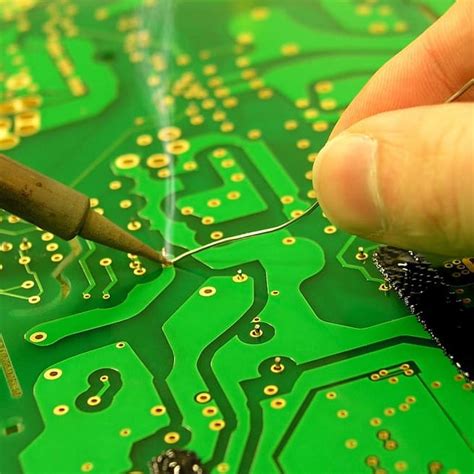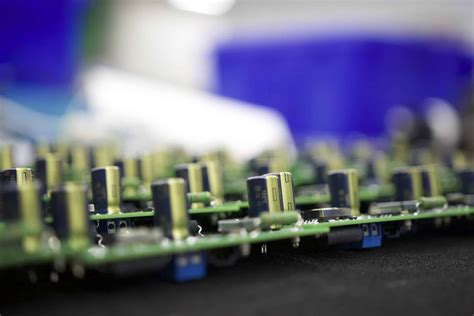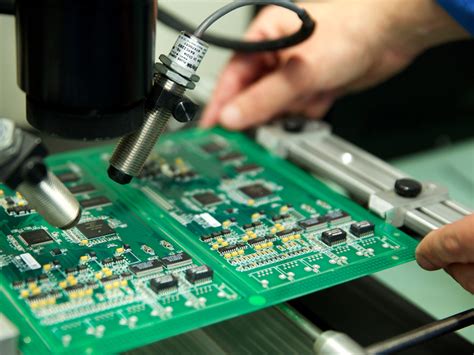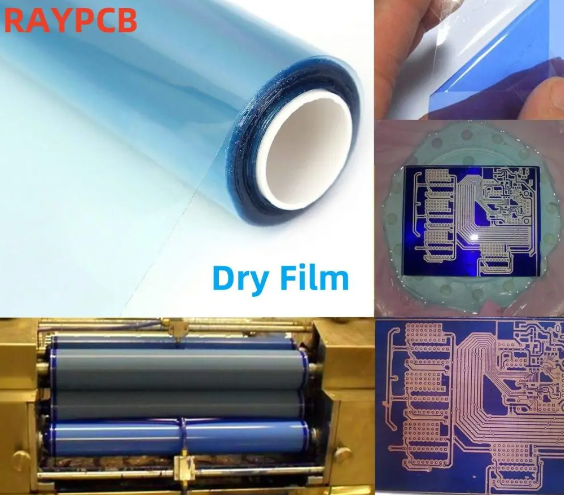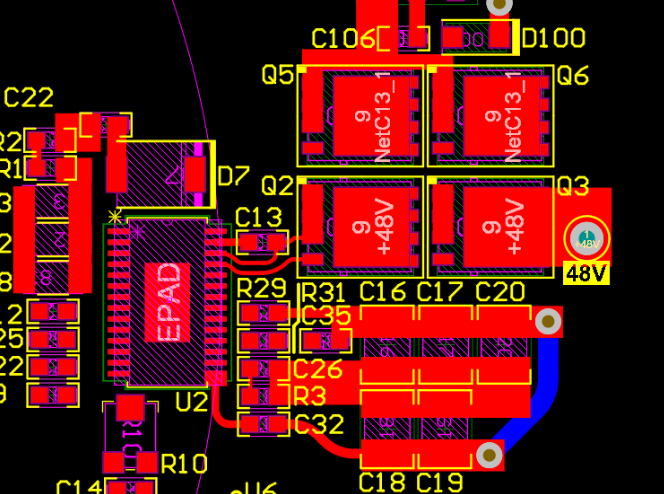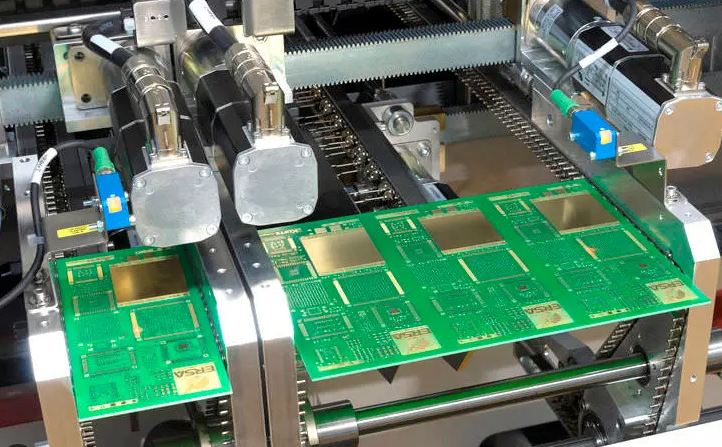Pcb manufacturing automation
Benefits Of Automated PCB Assembly
Automated PCB assembly has revolutionized the electronics manufacturing industry, offering a multitude of benefits that enhance efficiency, accuracy, and overall production quality.
One of the primary advantages of automation in PCB assembly is the significant reduction in human error.
Manual assembly processes are inherently prone to mistakes, which can lead to defective products and increased costs. By contrast, automated systems utilize precise machinery and advanced software to ensure that each component is placed accurately and soldered correctly, thereby minimizing the risk of errors and improving the reliability of the final product.
In addition to reducing errors, automated PCB assembly also significantly boosts production speed.
Traditional manual assembly is labor-intensive and time-consuming, often requiring skilled technicians to meticulously place and solder each component. Automation streamlines this process by employing high-speed pick-and-place machines that can handle thousands of components per hour. This rapid assembly capability not only accelerates production timelines but also allows manufacturers to meet tight deadlines and respond more swiftly to market demands.
Moreover, automated PCB assembly enhances consistency and repeatability in the manufacturing process.
Human operators, no matter how skilled, can introduce variability in the assembly process due to fatigue, distraction, or other factors. Automated systems, however, operate with unwavering precision, ensuring that each PCB is assembled to the same exacting standards. This consistency is crucial for maintaining product quality, especially in industries where reliability and performance are paramount, such as aerospace, medical devices, and automotive electronics.
Another significant benefit of automated PCB assembly is the potential for cost savings.
While the initial investment in automation technology can be substantial, the long-term savings are considerable. Automation reduces labor costs by minimizing the need for manual intervention and allows for more efficient use of materials, reducing waste. Additionally, the increased production speed and reduced error rates translate to lower overall manufacturing costs, making automated PCB assembly a financially sound choice for many companies.
Furthermore, automated PCB assembly facilitates greater design flexibility and innovation.
Advanced automated systems can handle a wide range of component types and sizes, enabling manufacturers to experiment with more complex and compact designs. This flexibility is particularly valuable in the development of cutting-edge electronic devices, where space constraints and performance requirements often necessitate intricate PCB layouts. Automation also supports rapid prototyping, allowing designers to quickly iterate and refine their designs, ultimately accelerating the product development cycle.
Environmental considerations also play a role in the benefits of automated PCB assembly.
Automated systems are typically more efficient in their use of energy and materials, leading to a reduction in the environmental footprint of the manufacturing process. Additionally, the precision of automated assembly reduces the likelihood of defective products, which in turn decreases the amount of electronic waste generated. As sustainability becomes an increasingly important factor in manufacturing, the environmental advantages of automation cannot be overlooked.
In conclusion, the benefits of automated PCB assembly are manifold, encompassing improved accuracy, increased production speed, enhanced consistency, cost savings, design flexibility, and environmental sustainability. As technology continues to advance, the role of automation in PCB manufacturing is likely to expand further, driving continued improvements in efficiency and quality. For manufacturers seeking to remain competitive in a rapidly evolving industry, embracing automated PCB assembly is not just an option but a necessity.

Innovations In PCB Manufacturing Robotics
The field of printed circuit board (PCB) manufacturing has witnessed significant advancements over the past few decades, with automation playing a pivotal role in enhancing efficiency, precision, and scalability. Innovations in PCB manufacturing robotics have been at the forefront of this transformation, driving the industry towards unprecedented levels of sophistication and reliability.
As we delve into the intricacies of these advancements, it becomes evident that the integration of robotics in PCB manufacturing is not merely a trend but a fundamental shift in how electronic components are produced.
One of the most notable innovations in PCB manufacturing robotics is the development of automated optical inspection (AOI) systems.
These systems utilize high-resolution cameras and advanced algorithms to meticulously inspect PCBs for defects such as misaligned components, soldering issues, and surface irregularities. By automating the inspection process, manufacturers can achieve higher accuracy and consistency, significantly reducing the likelihood of defective products reaching the market. Moreover, AOI systems can operate at speeds far exceeding human capabilities, thereby accelerating the overall production process.
In addition to AOI systems, robotic pick-and-place machines have revolutionized the assembly of PCBs.
These machines are designed to precisely place electronic components onto the PCB with remarkable speed and accuracy. Utilizing sophisticated vision systems and advanced motion control technologies, pick-and-place robots can handle a wide variety of components, from tiny surface-mount devices to larger through-hole components. The ability to program these machines for different PCB designs ensures flexibility and adaptability in the manufacturing process, catering to the diverse needs of various industries.
Furthermore, the advent of collaborative robots, or cobots, has introduced a new dimension to PCB manufacturing.
Unlike traditional industrial robots, cobots are designed to work alongside human operators, enhancing productivity while ensuring safety. These robots can perform repetitive and labor-intensive tasks, such as soldering and component placement, allowing human workers to focus on more complex and value-added activities. The integration of cobots into PCB manufacturing not only improves efficiency but also fosters a more ergonomic and safer working environment.
Another significant innovation is the use of robotic dispensing systems for applying solder paste and adhesives.
These systems ensure precise and consistent application, which is crucial for the reliability and performance of the final product. By automating the dispensing process, manufacturers can achieve uniformity in solder joints and adhesive bonds, thereby enhancing the overall quality of the PCBs. Additionally, robotic dispensing systems can be easily reprogrammed for different PCB designs, offering versatility and reducing setup times.
The implementation of robotics in PCB manufacturing is further complemented by advancements in machine learning and artificial intelligence (AI).
These technologies enable robots to learn from data and improve their performance over time. For instance, AI-powered robots can analyze inspection data to identify patterns and predict potential defects, allowing for proactive measures to be taken. This predictive capability not only enhances the quality control process but also minimizes downtime and reduces waste.
In conclusion, the innovations in PCB manufacturing robotics have brought about a paradigm shift in the industry, driving improvements in efficiency, precision, and scalability. Automated optical inspection systems, robotic pick-and-place machines, collaborative robots, and robotic dispensing systems are just a few examples of how robotics is transforming PCB manufacturing. Coupled with advancements in machine learning and AI, these innovations are paving the way for a future where PCB production is faster, more reliable, and highly adaptable to the ever-evolving demands of the electronics industry. As technology continues to advance, the role of robotics in PCB manufacturing is poised to become even more integral, heralding a new era of automation and excellence.

Reducing Errors With Automated PCB Inspection
In the realm of printed circuit board (PCB) manufacturing, precision and accuracy are paramount. The intricate designs and complex functionalities of modern PCBs necessitate a meticulous approach to their production. However, human error remains an inherent risk in manual inspection processes. To mitigate this risk, the industry has increasingly turned to automated PCB inspection systems, which offer a multitude of advantages in reducing errors and enhancing overall quality.
Automated PCB inspection systems employ advanced technologies such as machine vision, artificial intelligence, and sophisticated algorithms to scrutinize PCBs with a level of precision unattainable by human inspectors.
These systems are capable of detecting minute defects, including misaligned components, soldering issues, and surface irregularities, which might otherwise go unnoticed. By leveraging high-resolution cameras and sensors, automated inspection tools can capture detailed images of the PCB, enabling thorough analysis and identification of potential flaws.
One of the primary benefits of automated PCB inspection is its ability to provide consistent and repeatable results.
Unlike human inspectors, who may experience fatigue or variability in their assessments, automated systems maintain a uniform standard of inspection throughout the production process. This consistency is crucial in ensuring that each PCB meets the stringent quality requirements demanded by various industries, from consumer electronics to aerospace.
Moreover, automated inspection systems significantly reduce the time required for PCB inspection.
Traditional manual inspection methods are labor-intensive and time-consuming, often leading to bottlenecks in the production line. In contrast, automated systems can rapidly process large volumes of PCBs, thereby accelerating the overall manufacturing cycle. This increased efficiency not only enhances productivity but also allows manufacturers to meet tight deadlines and respond swiftly to market demands.
In addition to speed and consistency, automated PCB inspection systems offer the advantage of comprehensive data collection and analysis.
These systems can generate detailed reports on the types and frequencies of defects detected, providing valuable insights into the manufacturing process. By analyzing this data, manufacturers can identify patterns and trends, enabling them to pinpoint the root causes of defects and implement corrective measures. Consequently, this proactive approach to quality control helps in minimizing future errors and improving the overall reliability of the PCBs.
Furthermore, the integration of automated inspection systems into the PCB manufacturing process can lead to significant cost savings.
While the initial investment in such technology may be substantial, the long-term benefits far outweigh the costs. Reduced error rates translate to fewer reworks and scrap materials, thereby lowering production expenses. Additionally, the enhanced efficiency and productivity achieved through automation can result in higher throughput and increased profitability.
It is also worth noting that automated PCB inspection systems contribute to enhanced safety in the manufacturing environment.
By minimizing the need for manual handling and inspection of PCBs, these systems reduce the risk of occupational injuries and exposure to hazardous materials. This not only ensures the well-being of the workforce but also aligns with regulatory compliance and industry standards.
In conclusion, the adoption of automated PCB inspection systems represents a significant advancement in the field of PCB manufacturing. By reducing errors, enhancing consistency, and providing valuable data insights, these systems play a crucial role in ensuring the production of high-quality PCBs. As technology continues to evolve, the capabilities of automated inspection systems are expected to expand further, offering even greater precision and efficiency in the quest for manufacturing excellence.
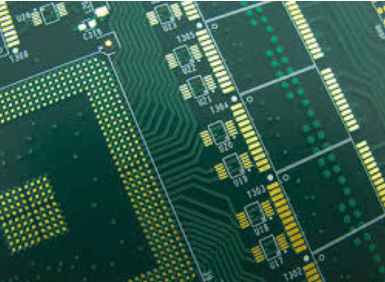
Cost Efficiency Through PCB Manufacturing Automation
In the realm of modern electronics, the demand for high-quality, reliable printed circuit boards (PCBs) has surged, necessitating advancements in manufacturing processes. One significant development in this field is the automation of PCB manufacturing, which has proven to be a game-changer in terms of cost efficiency. By integrating automated systems, manufacturers can streamline production, reduce errors, and ultimately lower costs, thereby enhancing their competitive edge in the market.
To begin with, automation in PCB manufacturing significantly reduces labor costs.
Traditional PCB production is labor-intensive, requiring skilled workers to manually handle various stages of the process, from drilling and soldering to inspection and testing. Automation minimizes the need for human intervention by employing robotic arms, automated optical inspection (AOI) systems, and computer-controlled machinery. These technologies not only perform tasks with greater precision but also operate continuously without fatigue, leading to higher productivity and lower labor expenses.
Moreover, automated systems enhance material utilization, which is another critical factor in cost efficiency
In manual processes, material wastage is often inevitable due to human error and inefficiencies. Automated machinery, however, is programmed to optimize material usage, ensuring that every piece of raw material is utilized to its fullest potential. This precision reduces scrap rates and minimizes the need for excess inventory, thereby lowering material costs and contributing to overall cost savings.
In addition to labor and material savings, automation also accelerates the production cycle.
Traditional PCB manufacturing involves multiple stages, each requiring meticulous attention to detail and time-consuming manual adjustments. Automated systems, on the other hand, can seamlessly transition from one stage to the next with minimal downtime. This rapid progression not only shortens lead times but also allows manufacturers to meet tight deadlines and respond swiftly to market demands. Consequently, faster production cycles translate to increased throughput and higher revenue potential.
Furthermore, the implementation of automation in PCB manufacturing enhances quality control, which is intrinsically linked to cost efficiency.
Automated inspection systems, such as AOI and automated X-ray inspection (AXI), can detect defects and inconsistencies with remarkable accuracy. By identifying issues early in the production process, these systems prevent defective products from reaching the market, thereby reducing the costs associated with rework, returns, and warranty claims. Enhanced quality control also bolsters customer satisfaction and brand reputation, which are invaluable assets in a competitive industry.
Another noteworthy advantage of automation is its scalability. As demand for PCBs fluctuates, manufacturers must be able to adjust their production capacity accordingly.
Automated systems offer the flexibility to scale operations up or down with relative ease, without the need for extensive reconfiguration or additional labor. This adaptability ensures that manufacturers can efficiently manage resources and maintain cost efficiency, regardless of market conditions.
Lastly, the integration of automation in PCB manufacturing fosters innovation and continuous improvement.
Automated systems generate vast amounts of data, providing valuable insights into production processes and performance metrics. By analyzing this data, manufacturers can identify areas for improvement, implement process optimizations, and drive innovation. This continuous feedback loop not only enhances operational efficiency but also positions manufacturers at the forefront of technological advancements.
In conclusion, the automation of PCB manufacturing presents a multitude of benefits that collectively contribute to cost efficiency. By reducing labor and material costs, accelerating production cycles, enhancing quality control, offering scalability, and fostering innovation, automated systems enable manufacturers to achieve significant cost savings while maintaining high standards of quality and reliability. As the electronics industry continues to evolve, the adoption of automation in PCB manufacturing will undoubtedly remain a pivotal strategy for achieving sustained success and competitiveness.


